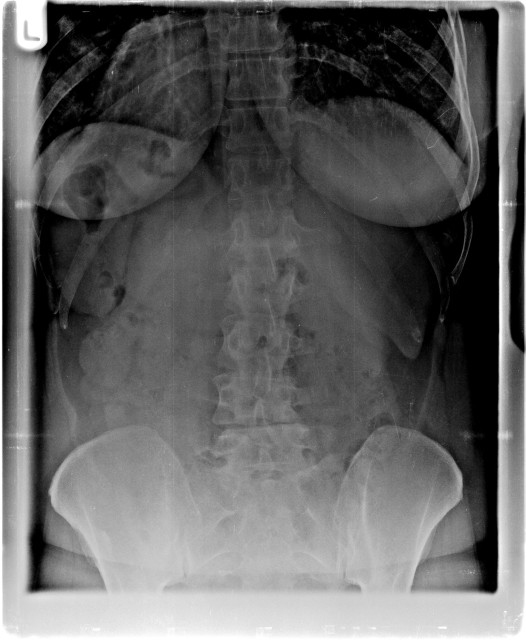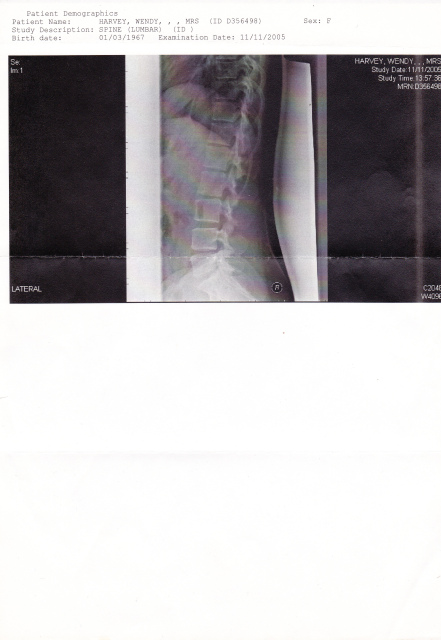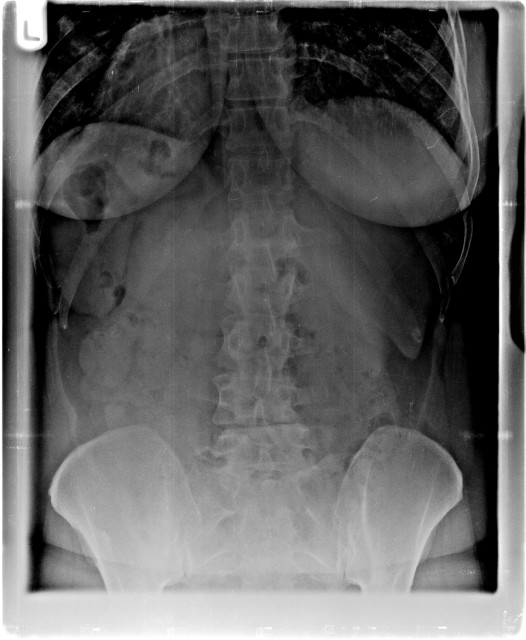Question XRAYS
XRAYS
QUESTION: Hi I am really hoping you can give me some advice please.I am 44yrs old Female.Back in 2005
after physiotherapy which made the pain much worse and finally having a mri scan,it showed two protruding discs,wear & tear and I think they called it Osteophytes.The hospital said there was nothing they could do other than pain management.I had injection at lower spine this did help with pain but it only lasted two weeks.So then I was put on different pain tablets,none of which worked.Then I was put on Morphine tablets.These do help but with side effects,so I do not take all the time.In between all this time a few times I went back to hospital because I also started to get pain down my left leg right from buttock to foot.Was told it was ok and to carry on with pain meds and was given a tens machine to try,this does not help.
I then tried myself with acupuncture I had 16 sessions which did not help.I have spent a lot of money on different gadgets and creams claiming to work with no success.
I have just recently seen a Chiropractice she took xrays of which are attached.She has told me given the xrays and examination and past history that I have two slipped discs possibly three,she says this is the same as bulging discs,and I have a pinched nerve which is why my left leg and foot sometimes goes numb,at least twice a week and pain.She says I will need two treatments every wk for 6wks then once a wk for another 6wks and cannot miss any appointments.But can she really help,I can see maybe it will help with the pinched nerve but can it really put discs back where they should be?
I do not want to be skeptical, but in the past I have spent a lot of money with no improvement.The pain in lower back and the left leg and foot is now much worse.The whole thing effects every day life it seems the more I do the worse the pain is.Any advice will be much appreciated.Thank You
Regards
Wendy
ANSWER: Wendy,
Could you please send me the information detailed in your MRI report as well as your specific symptoms: where does the pain start, on which side of the body, and where does it radiate?
Thanks.
---------- FOLLOW-UP ----------
 MRI
MRI
QUESTION: MRI SCAN TAKEN I 2005
ANSWER: Hi Wendy,
Thanks for sending the additional information. The MRI (that was actually an x-ray which you had labeled as an MRI) would provide me with the most information, but based on the symptoms that you related and the information you were able to provide, it seems most likely that your symptoms are consistent with a herniated lumbar (low back) disc, particularly of the L4-L5 disc. Plain film x-rays are useless for evaluating disc problems.
Please see these links for some additional information on lumbar degenerative disc disease and low back pain, and on the evaluation and treatment options for herniated lumbar discs:
http://tinyurl.com/3wdntwu
http://tinyurl.com/6dek53
Having tried physiotherapy, pain medication, and acupuncture with no success, I am not sure if manual spinal therapy would help you. A trial course of three weeks of manual spinal therapy might be worthwhile.
However, with the history that you have presented, I would not hesitate to send a patient for a lumbar epidural spinal injection. In the U.S., typically, an anesthesiologist places a patient under sedation and uses fluoroscopy (motion picture x-ray) to guide a needle into the spine to inject a corticosteroid, which is designed to reduce inflammation around the disc and nerve that are affected. This in turn reduces pain and allows a patient to undergo some kind of physical therapy. Typically, a maximum of three or four injections in the course of one year, divided over three or four months, are tried.
I would also recommend that you try spinal extension exercises, if you have not done so when you had your physiotherapy. This method of self-treatment was developed by an Australian physiotherapist, Robin McKenzie, and are helpful in about half to three quarters of patients with back pain caused by disc herniations. These kinds of exercises are particularly helpful when patients are receiving a passive therapy, such as chiropractic or physiotherapy, because it provides a mean by which they can actively participate in their recovery and rehabilitation at home, in between office visits. Typically, patients who consistently perform an appropriate home rehabilitative exercise have better outcomes that patients who simply rely on passive therapy.
Please see:
http://tinyurl.com/3hqlsw3
You can also view a video of these exercises at:
http://tinyurl.com/ljmcgx
Typically, surgery is reserved for patients who develop neurological symptoms (loss of sensation, or control over bladder and bowel function), loss of limb function, or severe pain that has not resolved with aggressive conservative therapy.
I hope that this helps to answer your question.
---------- FOLLOW-UP ----------
 Recent xray
Recent xray
QUESTION: recent xray
AnswerWendy,
With the limited information I have about your condition, I cannot say with confidence that you would be likely responder to spinal manipulation performed by a chiropractor. I would really need to read your MRI scan and/or report to correlate the symptoms you have described with the anatomy of your spine. The images you sent were actually the front and side view x-rays, not MRI scans.
I don't understand the reluctance of the physician who ordered your MRI to provide you with that information, or the facility where it was performed to provide you with the images of your scan. As I understand it, UK citizens have the right to request and access their medical records. Please see this link for more information on accessing your medical records:
http://tinyurl.com/2h6ebl
Before you spend anymore time and money seeking additional help from other providers, I would first try the recommendations for self-treatment which I noted previously to see if you respond to the McKenzie system of spinal extension exercises. Typically, patients with pain that radiates from their spine to their legs respond well to this form of self-treatment, but patients with significant osteoarthritis may actually find that extension maneuvers worsen their pain. Robin McKenzie details these points in his book.
Based on just your description of symptoms, my best guess is that you probably have a combination of disc derangement and bone spur formation causing chronic nerve irritation. Again, the MRI would best provide me with the information to confirm this. Patients with certain types of disc derangement and degenerative spinal changes (which includes bone spurs, or osteophytes, and osteoarthritis of the facets, or the joints) may respond better to spinal epidural injections than manipulation.
I can understand your frustration with living in chronic back pain and having tried a number of treatment modalities which failed to help you. It is critical to know exactly what one is treating in order to recommend the best treatment modality. Without additional information, I regret that I cannot provide you with more specific recommendations.




